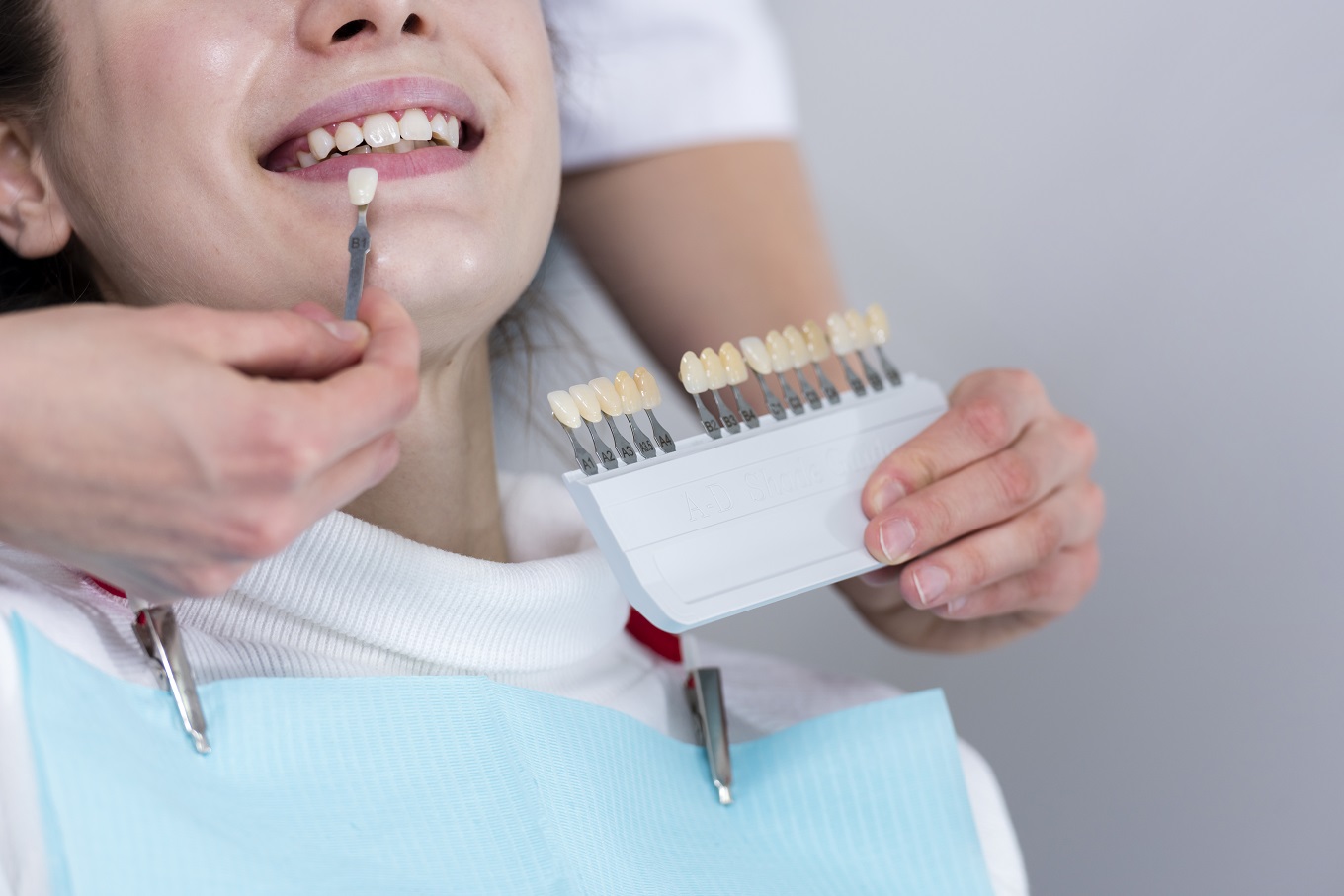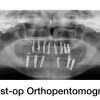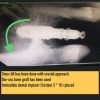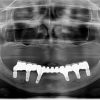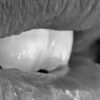By Dr. Rajesh Nawal
Cosmetic dentistry focuses on improving the appearance of your mouth, teeth, and smile. If you have misaligned or broken teeth, or if you are just looking to improve your smile in any way, we have a wide range of cosmetic procedures from veneers to professional home whitening. Scroll down for more information on our cosmetic treatments and procedures.
Treatments Followed in Cosmetic Dentistry
Teeth Whitening
Teeth whitening also known as teeth bleaching is a simple, safe and effective method of creating a whiter and brighter smile. Research suggests that brightening your smile can make you look healthier, as well as younger and more attractive. There are many different methods available for teeth whitening, such as chemical whitening and abrasive brightening. At the Nawal’s ivory dental implant clinics, where possible, we want to use the most highly effective, and no – intrusive methods to achieving desired results.
What Causes Stained Teeth
There are many contributing factors that can cause stains to teeth. Discoloration to teeth usually begins in your late 20s and early 30s, as the outer layer of the teeth, also known as tooth enamel, starts to become thinner with age. Unfortunately, discoloration can also be hereditary, meaning due to genetics, you can be prone to early yellowing or discoloration of the teeth.
The biggest contributing factor to teeth staining is lifestyle, your diet has a large impact on your teeth. Tea, coffee, red wine as well as citrus and acidic foods can lead to teeth becoming stained.
Chemical damage such as medicines or tobacco also discolors teeth, these are usually called extrinsic stains, this is where the enamel of the tooth becomes marked. Many extrinsic type stains are reversible and can completely disappear using teeth whitening treatments.
What to Expect
Teeth whitening is an effective method in eliminating or reducing discoloration of teeth, by removing yellow and or brown extrinsic stains. Teeth can be brightened 4 or 5 shades alone in the first treatment and overall more than seven shades whiter with ongoing treatment. You and your dentist using a shade chart can decide the best and most appropriate shade to suit your smile.
Teeth whitening is not a permanent process although it will last longer depending on lifestyle, whitening usually lasts one to two years. After a teeth whitening treatment, teeth may have an increase of sensitivity for one or two days, however, this will not have any lasting effect or damage to teeth.
Teeth whitening procedures are highly effective in removing different kinds of stains, although they may not completely eliminate some stains, it should be noted that the darker the stain i.e brown or black, the tougher it will be to remove. There are two different types of stains which can cause discoloration to the teeth, these are intrinsic and extrinsic stains.
Extrinsic stains are the discoloration of the outer layer of the teeth, these stains are superficial, meaning that they can be removed from teeth whitening, bleaching and or polishing.
In some cases, the tooth’s inner structure becomes discolored, giving teeth a yellow or grey hue. The difference between extrinsic and intrinsic stains, is that intrinsic stains are deep within the tooth’s structure, therefore stains cannot be easily removed. Depending on the severity of the condition, some intrinsic stains can never be removed by means of bleaching or whitening. There are other treatments or procedures available for intrinsic stains, such as porcelain veneers. See our porcelain veneers page at the Brighton Implant clinic.
Intrinsic stains can be caused by different conditions and traumas to the teeth. An example of this is the use of tetracycline, an antibiotic. This medication taken by children at a young age during teeth development, can cause intrinsic stains that cannot be removed through teeth whitening. Trauma to teeth, causing blood vessel or nerve damage can also cause intrinsic stains, root canal treatment may be advisable here, as to prevent further staining to the teeth.
Fluorosis
Fluoride is found in many foods, all drinking water, and is used as an active ingredient in many toothpastes. This mineral has been clinically proven to strengthen tooth enamel which helps build resilience against tooth decay. Overexposure to fluoride during early teeth development however can cause a dental condition called fluorosis. Fluorosis can be mild or severe, depending on the level of exposure. Mild fluorosis can lead to white lines, spots or streaks appearing on teeth. Teeth whitening can brighten your smile making the appearance of these marks less noticeable. In more severe cases, affected teeth may become pitted and develop grey, black or brown spots. In these cases, teeth whitening can not treat those affected teeth.t the Brighton Implant clinic.
Intrinsic stains can be caused by different conditions and traumas to the teeth. An example of this is the use of tetracycline, an antibiotic. This medication taken by children at a young age during teeth development, can cause intrinsic stains that cannot be removed through teeth whitening. Trauma to teeth, causing blood vessel or nerve damage can also cause intrinsic stains, root canal treatment may be advisable here, as to prevent further staining to the teeth.
Root canal treatment and Teeth Whitening
Root canal treatment may become a necessity in preventing further infection, decay, discoloration or tooth loss. Tooth whitening, such as Zoom whitening is an external agent used to whiten teeth. If a tooth or set of teeth becomes darkened following a root canal treatment, the dentist may be able to apply a bleaching agent internally within the tooth. This process is called non-vital whitening, which is where the tooth’s pulp chamber is thoroughly cleaned, disinfected and filled with a bleach – soaked cotton ball. This remains within the teeth pulp chamber, usually changed once a week. Over time the affected tooth or teeth will whiten from the inside out.
Cosmetic Bonding
Cosmetic bonding or tooth bonding is basically a dental procedure that involves using a composite resin to serve various cosmetic and structural purposes. Experts often say that it wouldn’t be wrong to compare dental bonding materials to the clay of a sculptor. With the use of composite resin bonding, dentists aim at restoring teeth that are chipped or broken while filling in gaps between teeth as well as enhancing the patient’s smile.
What is Cosmetic Bonding
During this process, fillings of composite resin applied to the back and front of the teeth. Composites are actually special solutions that promote restoration of decayed teeth, so that cosmetic improvements can be made and teeth can be reshaped. People looking forward to options for lightening stains on teeth, closing gaps between teeth and fixing crooked teeth seek the help of this dental procedure. The application of thin plastic coating on the front surface helps in hiding any flaws in the appearance of teeth. Once this is done, bonding materials are applied and sculpted, colored and eventually shaped to produce a satisfactory result. The plastic is then hardened by a high-intensity light with the surface being eventually polished.
Even though, traditional silver fillings tend to last about 6-7 years, the composites used in the bonding procedures can have a life of up to 11 years.
Which Bonding Strategy Would your Dentist Choose
Your dentist will decide on the appropriate dental bonding strategy based on your dental health condition, considering the area that needs to be corrected. In cases where smaller corrections are needed, the bonding procedure can be completed in a single visit with the color-matched filling being bonded to the tooth for maximum strength. However, when corrections are required at a larger scale, the procedure typically requires two visits. This procedure involves developing a mold of the teeth and positioning a temporary filling. A highly durable filling is later developed at the dental lab for fitting the mold made from the patient’s teeth. Usually, porcelain-based fillings are used for this procedure and the custom-fit fillings are then bonded to the tooth on the patient’s next visit.
About the Procedure
The process involves the application of a moderate etching solution to the teeth for the purpose of creating slight crevices in the enamel structure of the tooth. The small crevices offer a comparably rough surface allowing the resin to bond materials to the patient’s teeth. After this, resin is positioned on the patient’s tooth with high-intensity light bonding the resin onto the tooth’s surface. Following the application of the last coat, the material is sculpted for fitting the patient’s tooth, after which it is finally polished.
Tooth-Colored Restoration
Made from powdered glass and acrylic resins, composite fillings are the most cost-effective, resilient and aesthetically-pleasing type of filling. It is also the most popular amongst our patients. These fillings blend to your natural teeth and you couldn’t tell the difference!
Veneers are thin shells of porcelain that are bonded to the front surfaces of natural teeth to improve the appearance of your smile. Veneers are minimally invasive and are used to improve the shape and color of natural teeth.
Porcelain veneers can fix teeth that are discolored, worn down, misaligned, or have gaps between them. With veneers you can choose the shade and shape of teeth that best suits your smile.
Usually veneers are less than 1mm in thickness hence natural tooth material. In some cases no preparation of the tooth is needed at all. These custom-made porcelain facings are bonded to teeth using new generation adhesive techniques.
Advanced Ceramic Materials
We use Ivoclar Emax ceramics considered by dentists and technicians as the best veneer material in the world. With a 99% success rate Emax has become ‘the material’ of choice for beautiful natural-looking dental restorations. The ultra-thin Emax veneers are then bonded to the teeth using advanced predictable bonding techniques.
Emax veneers will not discolor over time, being a densely pressed ceramic they are impermeable to staining.
With regular dental and hygiene visits the restorations should last 15-20 years
Experienced Ceramists
Our dentists and dental technicians first design your new smile using wax on stone models. The new teeth are designed in line with the patient’s expectations. Unlike conventional veneer procedures we ensure that all patients see the end result on their own teeth before treatment starts. This is called a try-in.
Patients are able to see if they are happy with the shape and size of teeth before any preparation of the teeth is carried out. We want to be sure that you will be happy with the end result so we make sure that both the dentist and the patient are working towards the same goal.
Dental Crowns – An Ideal Way to Rebuild Teeth
Dental crowns are an ideal way to rebuild teeth that have been broken, or have been weakened by decay or a very large filling. A dental crown fits right over the remaining part of the tooth, making it strong and giving it the shape and contour of a natural tooth. Dental Crowns are sometimes also known as ‘Caps’. An ‘Anterior Crown’ is a term used to describe a crown fitted to the front eight teeth. Dental crowns can also be used to improve the appearance of damaged teeth or worn teeth.
Why Would I Need A Dental Crowns –
- A natural tooth may have broken and restored it with a filling is not possible
- To prevent a tooth breaking (which has been weakened by a large filling)
- You may have discolored fillings and would like to improve the appearance of the tooth.
- A tooth that has been root treated will need a crown to protect it.
- You may have had an accident and damaged the tooth. It may help hold a bridge or denture firmly in place.
Does it Hurt to have a Teeth prepared for a Dental Crowns?
No. A local anesthetic is used and the preparation should feel no different from a filling. If the tooth does not have a nerve, and a post-dental crown is being prepared, then local anesthetic may not be needed
How long Will Dental Crowns last?
The life of a dental crown will depend on how well it is looked after. The dental crown itself cannot decay, but decay can start where the edge of the crown joins the tooth. It is very important to keep this area as clean as your other teeth, or decay could endanger the crown. Properly cared for crowns will last for many years – your dentist will be able to tell you how long.
Will The Crown Feel Different
Because the shape of the crown will be slightly different from the shape of your tooth before it was crowned, you may be aware of it to begin with. Within a few days, it should feel fine, and you will not notice it. The crown may need some adjustment if it feels higher than the surrounding teeth. If it is at all uncomfortable ask your dentist to check and adjust it.
Orthodontic Treatment
At the Nawal’s ivory dental implant clinic in Jaipur, we provide fixed and removable orthodontics to both adults and children. Unlike the stereotypes of traditional braces, modern orthodontics is about the most effective, comfortable and even invisible solutions. Today, orthodontic treatment is more patient-focused than ever before, meaning there are many different types of braces available. Not only can you straighten your teeth as well as widen your smile. Our orthodontic treatment can also help the long – term health of your teeth, gums, and mandibular (jaw) function.
So, what is Orthodontics?
Orthodontics is a branch of dentistry, which specialists in the development of your teeth, jaw and face shape. This treatment has many health as well as aesthetic benefits. Orthodontics can correct crooked, misaligned and crowded teeth in addition to treating jaw misalignment.
Our Orthodontic Treatment Range
Invisalign
Unlike traditional metal braces, Invisalign is currently one of the most discrete types of braces in orthodontics. They are completely clear, invisible and removable, with minimal impact on day-to-day life. If you want to take them out for an important meeting, you can do it.
What Are They?
Invisalign aligners are made of a thermoplastic material uniquely developed for Invisalign treatment. They are thin but strong shells that clip over teeth (similar to whitening trays) see below.
How Does Invisalign Work?
The Invisalign aligners are custom – made specifically for your teeth. Your Invisalign straighteners are replaced every two weeks, they work by applying a little pressure, bit by bit, pulling your teeth into the correct position.
Functional Braces
This type of brace is used to widen the upper and lower arches or to help correct a bite or move single teeth.
What Are They?
Removable or functional braces are made from acrylic and metal. The plastic is used to make a plate to fit against your top or lower palate. Metal wires are fixed from either side. These wires grip around teeth and keep the brace in place.
How Do They Work?
These types of braces are not for procession, meaning they can move single teeth but cannot reposition multiple teeth simultaneously. This type of brace has the wire tightened as well as sometimes the plastic plate reshaped.
Metal Braces
These are what people usually think of when they think of braces in the traditional sense. What many people don’t know is that metal braces in modern orthodontics are a lot smaller as well as more comfortable. Metal braces are the most cost-effective as well as time effective in achieving results.
What Are They?
Metal braces are made of high-quality stainless steel or titanium and are made of three main parts. These are the brackets (stuck to the front of teeth) an archwire, which is a thin metal wire going through the middle of the brackets and ligature elastics that attach to each bracket holding the wire into place.
How Does Invisalign Work?
Once your braces are fitted, the archwire is set so that the brace applies a constant but not painful pressure on your teeth. This pressure helps move your teeth into the proper position. It may feel tight at first but this usually wears off after a couple of days. At each appointment, your orthodontist will tighten the archwires.
Clear Braces
These types of braces are nearly exactly the same as metal braces apart from instead of metal brackets, we use ceramic brackets, which match the color of teeth. This makes them almost invisible! Using ceramic is more expensive than metal braces because of the material used, but they are as effective as metal braces and other than the metal brackets which are switched for ceramic brackets the three main parts are the same.
LINGUAL BRACES
Lingual braces, which translate to ‘tongue side’ braces, are another type of ‘invisible’ orthodontic treatment. These braces are very similar to metal braces, but the difference is, these braces are fitted behind the teeth instead of in front meaning they are virtually ‘invisible’.
These types of braces do take a little getting used to, but they have been proven to be as effective as metal braces and work by a similar method.
ORAL HEALTH & ORTHODONTICS
Crowded or misaligned teeth commonly mean that a person has a malocclusion, this simply means a misalignment or incorrect relationship between the teeth and the upper/lower jaw. What many people do not know is that having a malocclusion can lead to serious oral health problems.
SYMPTOMS OF A MALOCCLUSION INCLUDE
- Headaches.
- Crooked or protruding teeth.
- Discomfort when chewing or biting.
- Jaw pain.
- Breathing through the mouth rather than the nose.
- Frequent biting of the inner cheeks and or tongue.
- The shape of the face misaligned caused by the abnormal development of the teeth and jaw. An example of this is where the bottom jaw protrudes further than the upper also known as an underbite.
- Speech impediment.
- Teeth loosening.
NON-COSMETICS BENEFITS
Orthodontic treatment has many known – cosmetic benefits. If your teeth are misaligned, simple things such as maintaining good oral hygiene can be very difficult. Teeth that are crooked or contorted can cause ‘food traps’. Meaning, food can get trapped in areas, which are difficult or near impossible to clean. If food is not properly cleaned from teeth, this can cause plaque and tartar to build around teeth and gums. This is effectively full of bacteria, some harmful, which can cause not only oral health problems but problems to your overall health too.
Here are some of the non – cosmetic benefits of orthodontic treatment:
BITE CORRECTION
If you are experiencing nausea, try to lie down and rest as well as drink fluids high in sugar.
STRAIGHTEN CROWDING
Crowding of the teeth can create discomfort, where teeth shift and are forced forwards, backward or even rotated. Overcrowding can inhibit oral hygiene, meaning that you are more prone to oral diseases including gum disease – the leading cause of tooth loss.
BREATHING & SWALLOWING PROBLEMS (mostly occurring in sleep)
Orthodontic treatment can realign the jaw meaning that the relationship between the upper and lower arch meet properly when closed. This can prevent headaches, jaw pain or discomfort while chewing or biting and more.
Orthodontics can also be used to treat other health problems, such as a cleft lip/ palate or cases of Sleep Apnoea.
WHAT’S RIGHT FOR YOU?
As your smile is individual to you, your treatment will be individual to you too. At the Nawals’s ivory dental clinic Jaipur, we provide you with a unique treatment plan specifically for you. This will give you options on the best as well as the most effective treatment for you, taking into consideration what you want as well as your lifestyle and cost. If you would like any more information or an evaluation, our talented orthodontist’s are situated at our clinic.
What You Want To Know About Cost
Lots of our patients want to know “how much do braces cost?” Orthodontic prices can vary, as not only is each treatment plan individual, it is dependable on your wants and needs as well as the range of solutions that we offer.


